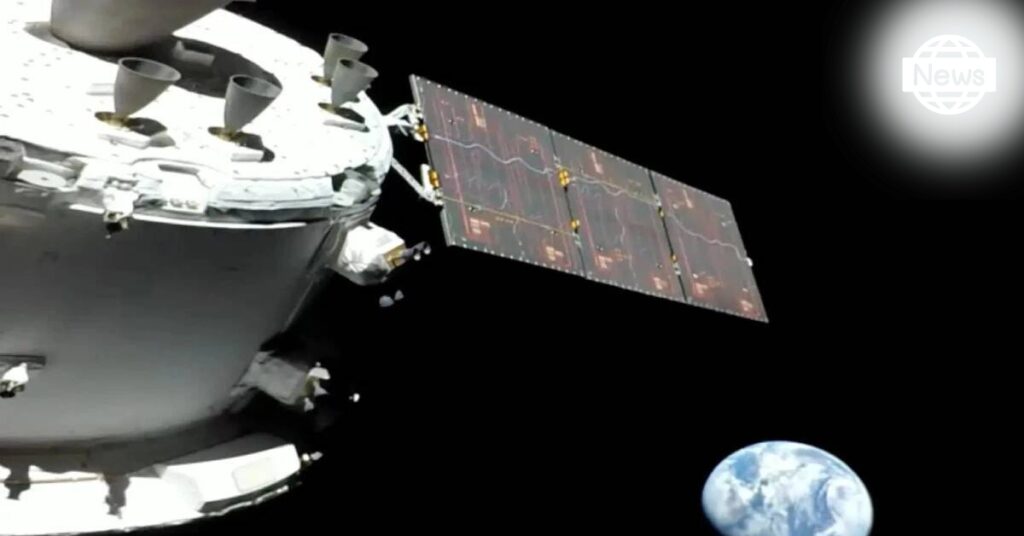The spaceship will remain there for six days, giving mission commanders the opportunity to test Orion’s systems.
On Monday, NASA’s Orion spacecraft flew over the moon’s far side, reaching within 81 miles of the surface.
Since Wednesday, when it was launched as part of the Artemis I mission, the spacecraft—which is unmanned—has been heading toward the moon. It will travel for another 20 days.
At a news conference on Monday evening, NASA’s Orion program manager Howard Hu stated that the vehicle “continues to operate exceptionally.”
One of the primary goals of the trip is to test that the Orion spacecraft operates as intended and to provide NASA the opportunity to make any necessary modifications and repairs before astronauts embark on the Artemis II mission, which won’t launch until at least 2024. Astronauts will attempt to touch the moon on the third Artemis mission, using the Orion spacecraft and a SpaceX vehicle.
On Monday, 2.5 minutes before Orion made its closest approach to the moon, the spacecraft activated its engine. That increased its speed as it swung outward into what is known as a far-off retrograde orbit.
The spacecraft is in a retrograde orbit that is 40,000 miles above the lunar surface; this implies that it is orbiting
The spaceship will remain there for six days, giving mission commanders the opportunity to test Orion’s systems. It would be the farthest away from Earth that any spaceship intended to carry humans had ever been, according to NASA. (The previous record was set during Apollo 13 when the damaged spacecraft was unable to reach orbit and had to swing around the moon to return to Earth.)
An earth set, or the small blue marble of Earth slipping behind the enormous grey disc of the moon in the front, was captured by a camera on Orion before the flyby, which offered excellent video of the moon growing gradually larger as the spacecraft neared.
Orion’s mission controllers at NASA lost touch with the spacecraft as expected as it passed behind the moon. Therefore, they were unaware that the engine firing had been successful until Orion reappeared 34 minutes later.
According to NASA flight director Judd Frieling, the spacecraft showed off its capability to transmit live footage back to Earth during the flyby and promised to relay more on a NASA website when practical. While it was out of communication behind the moon, the Orion captured photographs and video of the far side of the moon.
We won’t have those specific photographs down for a few days, Frieling predicted.
On Wednesday, NASA’s massive new Space Launch System rocket carrying Artemis
The Artemis I flight has gone off without a hitch, save for a few “funnies,” according to Mike Sarafin, the mission manager. Orion’s star trackers briefly became confused as the spacecraft’s engines fired was among the funniest scenes.
On Monday, Sarafin added, “I would give it a cautiously hopeful A+.” On day six of a 26-day adventure, we are in flight.
The primary non-American component of Artemis was exercised during the flyby. While Lockheed Martin constructed the Orion spacecraft, Boeing, Northrop Grumman, and the United Launch Alliance built the Space Launch rocket’s component elements.
The service module, which is the portion of Orion below the capsule and contains the thrusters, solar arrays, communications equipment, and other supplies, was created by Airbus and was one of the contributions made to the Artemis program by the European Space Agency. Prior to the capsule splashing down, the module will be released and burn up in the atmosphere rather than returning to Earth.
The service module’s engines will fire once more on Friday to launch Orion into the far-off retrograde orbit. Next Monday, Orion will have traveled over 270,000 miles from Earth, breaking the record set by Apollo 13 on Saturday of 248,655 miles for an astronaut-carrying spacecraft.
